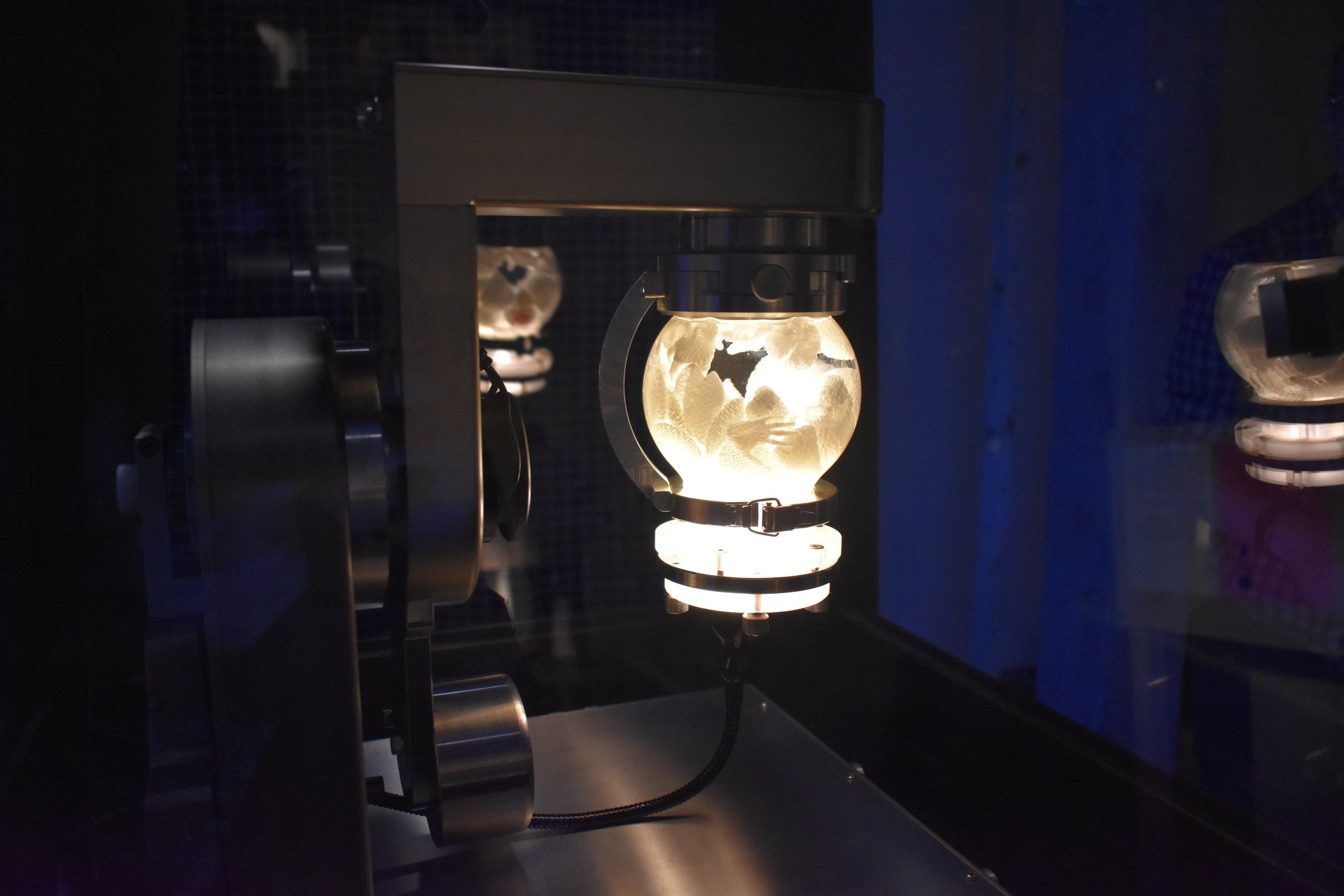Immortality Beta ∞
COLLABORATIVE PROJECT
The collective art project Immortality Beta ∞, developed by Svenja Kratz, Bill Hart, and Professor Dietmar W. Hutmacher, critically explores the concept of immortality through the lens of modern biotechnologies and cultural narratives surrounding life extension. The works probe questions about human identity, mortality, and the notion of the body as an assemblage of replaceable parts.
Monument to Immortality (2019) is one of the central pieces in this collection, symbolising humanity's enduring desire to conquer death through science. It features a bioreactor displaying scaffolds shaped as body parts, referencing ideas of bioengineered immortality. These scaffolds are seeded with human cells but lack the complexity and functionality of natural tissues, hinting at the limits of technology in replicating biological processes. The piece juxtaposes alchemical symbols with modern transhumanist iconography, underscoring the ancient and contemporary quests for eternal life. Additionally, video works embedded in the structure critique the influence of visual culture and media on public perceptions of technology’s potential for human enhancement, mixing medical visuals with sci-fi motifs.
Ghost Writer (2019), another work from the project by Kratz and Hart, uses AI to reflect on the separation of mind and body. It employs a neural network to continuously generate text in Kratz’s handwriting, based on her personal reflections and philosophical texts about posthumanism and identity. This piece prompts viewers to question the authenticity of a ‘self’ that could be uploaded or transferred into a digital form, provoking thought on the nature of identity in an age of technological replication.
Monument to Immortality: Installation view and detail of bioreactor and scaffolds; Sigil designs (below)
Ghost Writer: Installation view and detail of video avatar.
Collectively, these work challenge audiences to consider the philosophical and ethical ramifications of technological immortality: Is it feasible, or merely a recurring cultural fantasy? They ask if a technologically enhanced existence would still embody "selfhood" or if it’s an unattainable mirage accessible only to the privileged. Ultimately, the project serves as a speculative commentary on the limits of technology and persistent human desire to cheat the inevitability of death.
PROJECT PARTNERS: Immortality Beta ∞ was researched and developed in a creative partnership between the School of Creative Arts and Media at the University of Tasmania and Centre for Regenerative Medicine within the Institute of Health and Biomedical Innovation at the Queensland University of Technology. This research was conducted by the Australian Research Council Industrial Transformation Training Centre in Additive Biomanufacturing (IC160100026) http:// www.additivebiomanufacturing.org and supported by the UTAS Creative Exchange Institute (CxI). Initial project development was made possible with funding from a Creative Sparks grant from the Brisbane City Council. The Creative Sparks Fund is a partnership between the Queensland Government and Brisbane City Council to support local arts and culture in Brisbane and by the Australian Research Council Industrial Transformation Training Centre in Additive Biomanufacturing (IC160100026). The project was led by Dr Svenja Kratz, Dr Bill Hart and Distinguished Professor Dietmar W. Hutmacher with expertise and input from Dr Felix Wunner, Dr Jacqui McGovern, Dr Christina Theodoropulous, Dr Christoph Meinert, Dr Phillip Blacklow, Dr Onur Bas, Peter Bates and Murray Antill. Sound design was developed in collaboration with Carly Mitchell (Anise). Special thanks are also extended to Anita Gowers and Joanne Richardson.





